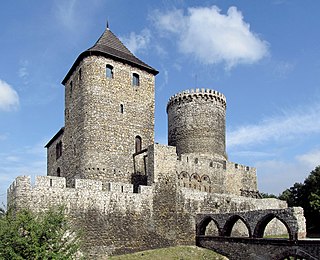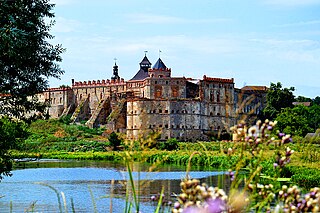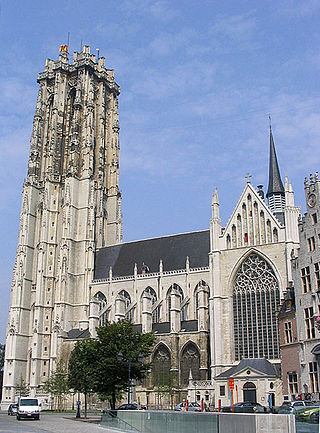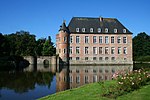
Lohengrin, WWV 75, is a Romantic opera in three acts composed and written by Richard Wagner, first performed in 1850. The story of the eponymous character is taken from medieval German romance, notably the Parzival of Wolfram von Eschenbach, and its sequel Lohengrin, itself inspired by the epic of Garin le Loherain. It is part of the Knight of the Swan legend.

North Brabant, also unofficially called Brabant, is a province in the south of the Netherlands. It borders the provinces of South Holland and Gelderland to the north, Limburg to the east, Zeeland to the west, and the Flemish provinces of Antwerp and Limburg to the south. The northern border follows the Meuse westward to its mouth in the Hollands Diep strait, part of the Rhine–Meuse–Scheldt delta. North Brabant had a population of about 2,626,000 as of January 2023. Major cities in North Brabant are Eindhoven, Tilburg, Breda, its provincial capital 's-Hertogenbosch, and Helmond

Heusden is a municipality and a city in the South of the Netherlands. It is located between the towns of Waalwijk and 's-Hertogenbosch. The municipality of Heusden, including Herpt, Heesbeen, Hedikhuizen, Doeveren, and Oudheusden, merged with Drunen and Vlijmen in 1997, giving the municipality its current form.

The National Redoubt was a strategic defensive belt of fortifications built in Belgium. The National redoubt was the infrastructural cornerstone of Belgian defensive strategy from 1890–1940.

Bouchout Castle is a castle in Meise, Flemish Brabant, Belgium. In the 12th century, this territory of the young Duchy of Brabant was strategically positioned between the County of Flanders and the Berthout family, lords of Grimbergen. Most likely, the first fortification was built by Wouter van Craaynem at the end of the Grimbergen Wars (1150–1170). Bouchout Castle is situated at an altitude of 32 metres (105 ft).

The Duchy of Brabant, a state of the Holy Roman Empire, was established in 1183. It developed from the Landgraviate of Brabant of 1085–1183, and formed the heart of the historic Low Countries. The Duchy comprised part of the Burgundian Netherlands from 1430 and of the Habsburg Netherlands from 1482, until it was partitioned after the Dutch revolt of 1566–1648.

The Będzin Castle is a castle in Będzin in southern Poland. The stone castle dates to the 14th century, and is predated by a wooden fortification that was erected in the 11th century. It was an important fortification in the Kingdom of Poland and later, the Polish–Lithuanian Commonwealth.

The Maribor Water Tower is a medieval fortified tower in the city of Maribor, Slovenia. The late-Renaissance tower stands directly abuts the Drava River and dates from 1555. It is of pentagonal form and consists of massive stone blocks interspersed with embrasures. It was built to secure the southeast part of the Maribor city walls from the direction of the river.

Medzhybizh Fortress also known as Medzhybizh Castle, is situated at the confluence of the Southern Bug and Buzhok rivers, in the town of Medzhybizh, Ukraine. Today the castle is part of the National Historical and Cultural Reserve.

Het Steen, also known as the Rubens Castle (Rubenskasteel), is a castle in Elewijt, Flemish Brabant in Belgium. It was owned by the artist Peter Paul Rubens between 1635 and his death in 1640 and the castle features in some of his landscape paintings.

Brabantine Gothic, occasionally called Brabantian Gothic, is a significant variant of Gothic architecture that is typical for the Low Countries. It surfaced in the first half of the 14th century at St. Rumbold's Cathedral in the city of Mechelen.

Antwerp is a city and a municipality in the Flemish Region of Belgium. It is the capital and largest city of Antwerp Province, and the third largest city in Belgium by area at 204.51 km2 (78.96 sq mi) after Tournai and Couvin. With a population of 536,079, it is the most populous municipality in Belgium, and with a metropolitan population of over 1.2 million people, the country's second-largest metropolitan area after Brussels.
The Margraviate of Antwerp consisted since the eleventh century of the area around the cities of Antwerp and Breda.
The following is a timeline of the history of the municipality of Antwerp, Belgium.

The Vleeshuis in Antwerp, Belgium, is a former guildhall. It is now a museum located between the Drie Hespenstraat, the Repenstraat and the Vleeshouwersstraat. The slope where the Drie Hespenstraat meets the Burchtgracht used to be known as the Bloedberg or Blood Mountain.

Antwerp was developed as a fortified city, but very little remains of the 10th century enceinte. Only some remains of the first city wall can be seen near the Vleeshuis museum at the corner of Bloedberg and Burchtgracht, and a replica of a burg (castle) named Steen has been partly rebuilt near the Scheldt-quais during the 19th century. Parts of the canals that protected the city between the 12th and 16th century have been covered and used as a sewage system. Both the 16th century city walls and the 19th century fortifications have been covered up by major infrastructure works during the 19th and 20th century.

St. Walburga Church or Burchtkerk was a Roman Catholic parish church in Antwerp, modern-day Belgium. It was demolished in 1817.

Burg Square is a square and former fortress in Bruges. It is one of the main squares of the city.

Saeftinghe Castle was a castle on the northeast tip of the drowned land of Saeftinghe. It was destroyed by flooding in the 16th century, and now its exact location is unknown.





























